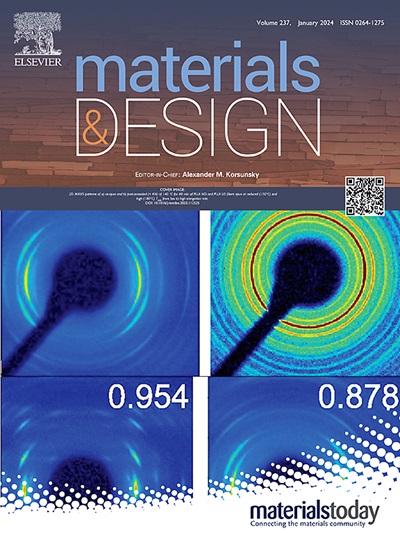Machine learning study on magnetic structure of rare earth based magnetic materials
IF 7.6
2区 材料科学
Q1 MATERIALS SCIENCE, MULTIDISCIPLINARY
引用次数: 0
Abstract
Machine learning is playing an increasingly important role in discovery and design of new materials. In this work, 11 machine learning algorithms were trained to predict the material magnetic structure. Material composition and crystal structure are used to classify the dataset, and the relationship between multi-feature variables is constructed in a small sample space. The prediction accuracy of all models is above 0.73. Compared with non-decision tree models, optimized decision tree algorithms such as Gradient Boosting have greater advantages in binary classification. Neural Network has the best performance in predicting skyrmion structure, with accuracy and reliability of 0.93 and 97 %, respectively. Rare earth elements have a great influence on the material magnetic structure, and their proportion is negatively correlated with the generation of nonlinear or skyrmion structures. The material is more prone to nonlinear magnetic structure when the space group belongs to the cubic and the hexagonal crystal systems. Based on the Neural Network, the magnetic structures of several rare earth oxides are predicted. The skyrmion in SrRxFe12-x-yMgyO19 and LaxBa1-xMnO3 was observed by Neutron Powder Diffraction and magnetic force microscope, which effectively verified the model accuracy. This work provides new perspectives for machine learning in the discovery of nonlinear magnetic structures and rapid design of material compositions.

求助全文
约1分钟内获得全文
求助全文
来源期刊

Materials & Design
Engineering-Mechanical Engineering
CiteScore
14.30
自引率
7.10%
发文量
1028
审稿时长
85 days
期刊介绍:
Materials and Design is a multi-disciplinary journal that publishes original research reports, review articles, and express communications. The journal focuses on studying the structure and properties of inorganic and organic materials, advancements in synthesis, processing, characterization, and testing, the design of materials and engineering systems, and their applications in technology. It aims to bring together various aspects of materials science, engineering, physics, and chemistry.
The journal explores themes ranging from materials to design and aims to reveal the connections between natural and artificial materials, as well as experiment and modeling. Manuscripts submitted to Materials and Design should contain elements of discovery and surprise, as they often contribute new insights into the architecture and function of matter.
 求助内容:
求助内容: 应助结果提醒方式:
应助结果提醒方式:


